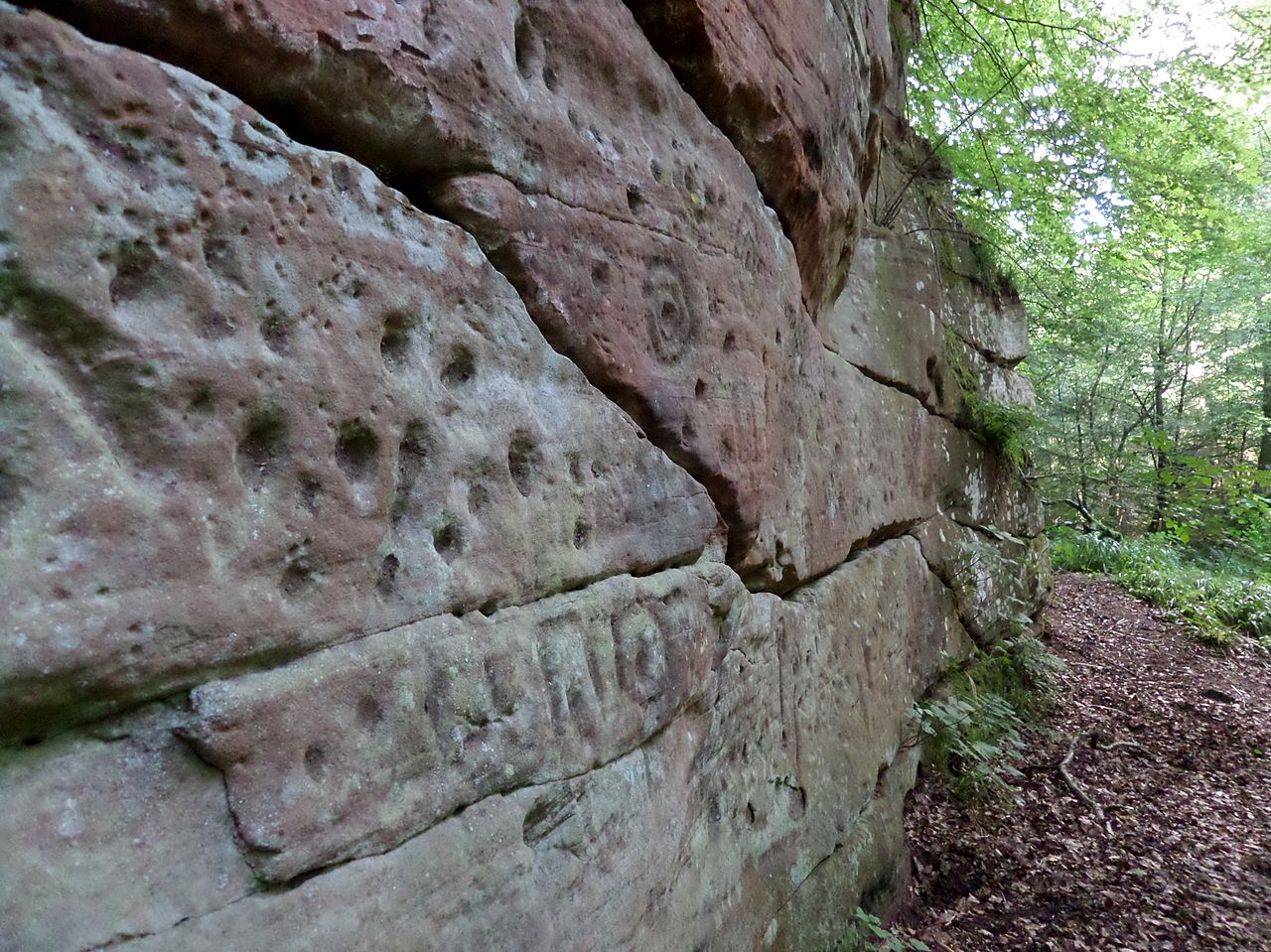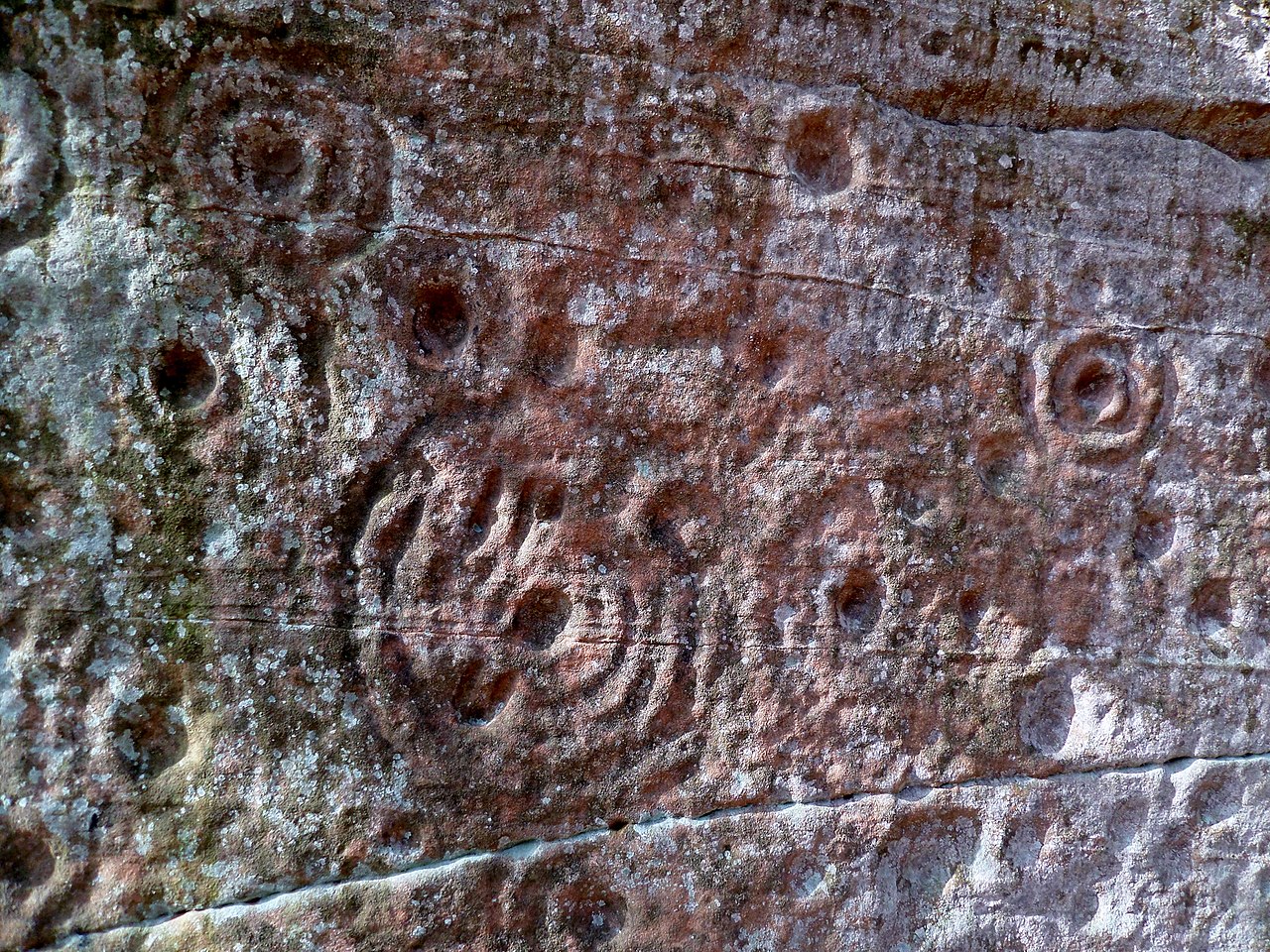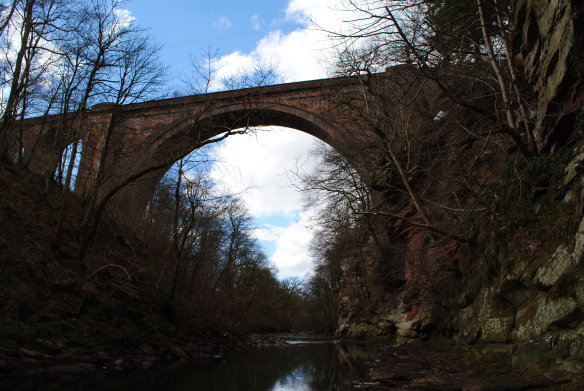
Richard Lutz gets down and dirty to come up against history in the raw.
>
It’s hidden above steep banks near a Scottish river, curtained by trees and forgotten quarries. Few seem to know about the Ballochmyle Bronze Age carvings. And most don’t know how to find them. Blogs and social media streams are full of wanderers who got lost or gave up. Only the persistent succeed.
The carvings, or petroglyphs, are among the best in Britain when it comes to Neolithic ‘cup and ring’ markings. They are an unknown, cloaked with mystery. The more experts investigate, the less they seem to know. They could go as far back as 2500BC. Some say 4000BC. But archeologists see this vertical sandstone sculpted wall – so rare because most like it are flat on the ground – as a public notice board from British pre-history.
There are hundreds of motifs and carvings at Ballochmyle: shallow cups, deep cups, multiple rings, spirals, square cups, the intriguingly named ringed stars, hints of triple symbols called trilithions and sometimes just simple linear scratchings that either were weighted with symbolism or simply used for sharpening tools. Some are intricate, some stylish, some cackhanded as if beginners or second rate sculptors had a go. In all, not much is known about these rock carvings.
And the fact that no one knows about them, despite recent laser analysis, adds to the fascination of the triple panel when you stumble upon it either up a stream called Liddell Burn or through fields and mud banks. The carvings were discovered in modern times only thirty years ago, when farm workers were clearing brush in the sandstone ravine. Such a recent discovery that’s now intriguing a galaxy of scientists. Here’s a close up:

There are hundreds of others, some bold and obvious, some worn away, others chipped, some beautiful, some badly carved. Worryingly, there is no fence nor barrier. You can touch them, trace a ring with a finger (which can damage them), go right up and slap down a selfie with your face right next to a strange motif from a lost tribe. They are that unprotected, as if officialdom doesn’t really want to make too big a deal about public access to these hints from this island’s past.
Where exactly are they? The ancient panels are deep in quarry country. The sandstone is pockmarked with old workings along the River Ayr, south of Glasgow.

credit: gavin macgregor
Remarkably, a giant 19th century rail viaduct, built from the same material as the neolithic walls, spans the river gorge. Here, you easily understand what the nearby stone was used for. It is an elegant indication of 150 year old engineering. But the nearby Ballochmyle carvings are the opposite. Their importance, once so obvious to an old race, is lost.
I won’t go into detail how to find this wall. Let’s just say, if you want to see it, with its messages from the distant past, you will have to work hard to come across it in a dark crevice of a Scottish wood. And there in front of you, you can stare, you can wonder, you can dream, as you stand silent in a cut of Ayrshire’s deep earth.



There are one or two very obscure cup and ring sites up here in the North- but I have no idea how to get there. Sounds familiar
Extremely cool….
Love to see them
more scottish rock carvings uncovered:
https://www.smithsonianmag.com/smart-news/pictish-carving-large-nosed-warrior-found-scotland-180967091/#8qpAvGc0yoWlVkgm.03
I too came across an ancient language the other day – Ogham, Irish sign language, carved into stones like the Pictish carvings. They all remind me of Chinese letters. Humans just need to write, don’t they ?